Make delicious Anko (Sweet Red Bean Paste) in a pressure cooker or Instant Pot with a few easy steps. Cooking under pressure is my favorite way to make homemade Anko because it works great and saves time. Use it as a sweet filling in your favorite Japanese pastries and desserts!

In Japan, there are all kinds of sweets and snacks everywhere, from convenience stores to busy stations and even department stores. You can find an assortment of Japanese and Western cookies, cakes, snacks, and desserts.
Speaking of Japanese sweets, the most popular filling in them is Anko or Sweet Red Bean Paste. I would describe its popularity as similar to chocolate for Western desserts.
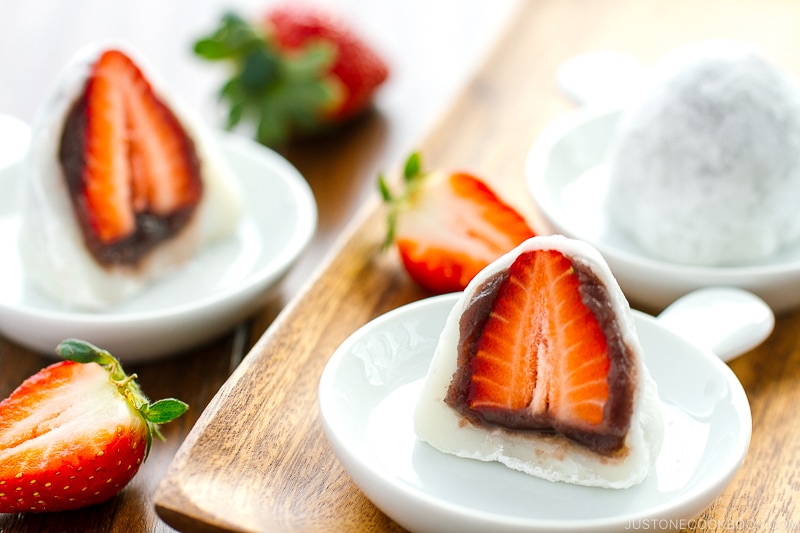
What type of Japanese desserts have red bean paste as filling? Mochi of course! The sweet red bean paste is inside all types of mochi as you see in Daifuku, Strawberry Mochi, Kashiwa Mochi, Sakura Mochi. Also in the flour cake batter, like in Dorayaki and Taiyaki.
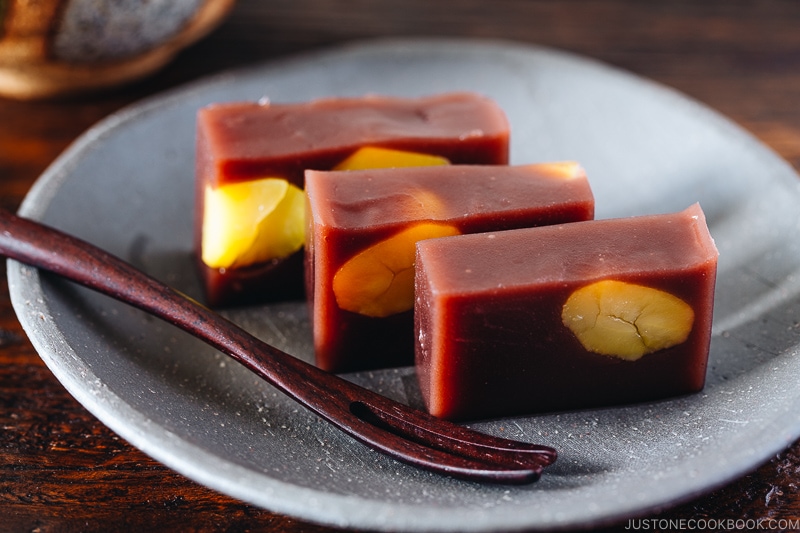
Other Japanese sweet that uses Anko as the main ingredient includes Yokan, Red Bean Ice Cream, and Zenzai or Oshiruko (Red Bean Soup), just to name a few.
Now making it is very easy, but cooking it in the traditional stove-top method requires your time and undivided attention. The amount of water in the pot has to be just right above the azuki beans while cooking, so you need to stay in the kitchen to keep an eye on it (this is a well-known “proper” method).
I’ve loved Anko all my life and I’m quite obsessed with it. But even such a fanatic myself, I’ve only made it at home on special occasions and relied on overly sweet premade ones from Japanese grocery stores to save time.
But not anymore with my Instant Pot! So today I will show you my favorite way to make homemade Anko with the pressure cooker.
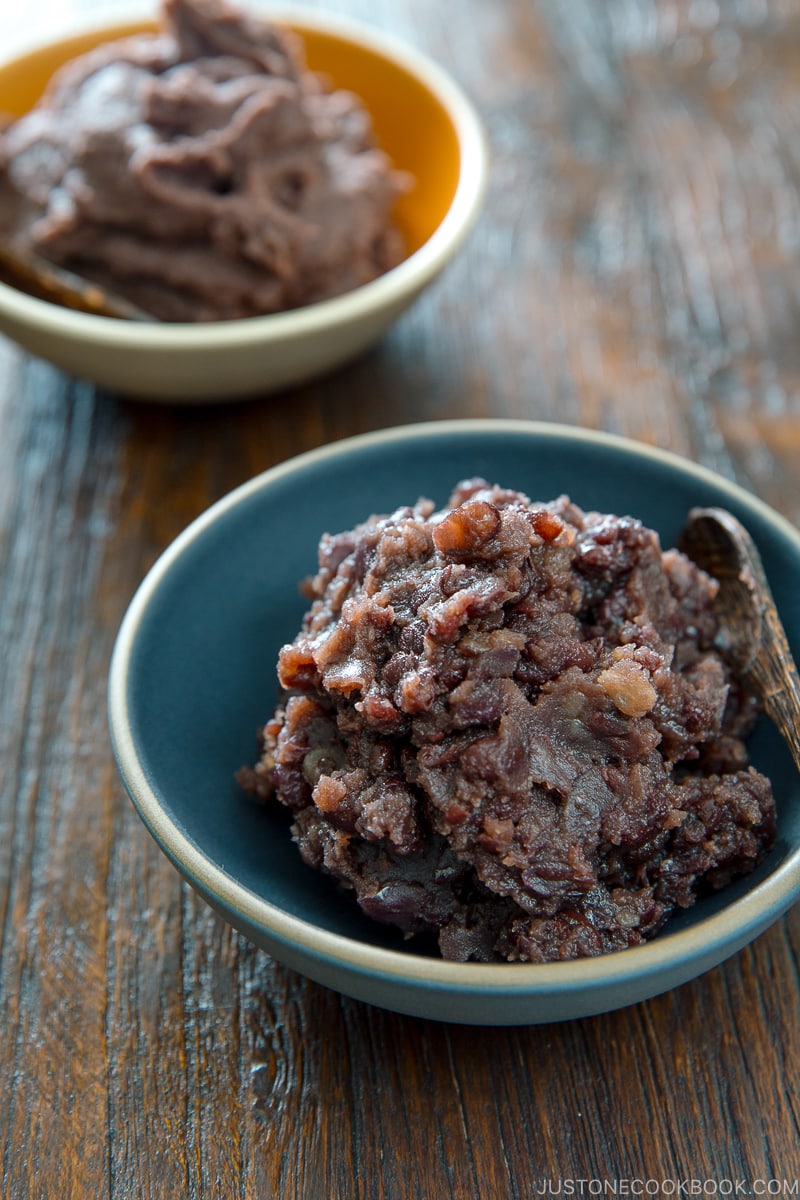
Making Anko in Pressure Cooker
So, the first step to making Anko easier is to speed up the process. Unfortunately, this will require a pressure cooker. I know, a pressure cooker is not a gadget that everyone has in the kitchen and I didn’t own one myself until last year. If you don’t own a pressure cooker, you can still make delicious homemade Anko on the stovetop (recipe here). Many of my readers really love this stovetop recipe!
Why use a Pressure Cooker then? It’s simple; 1) it cooks fast, 2) does a great job, and 3) saves you a lot of time.
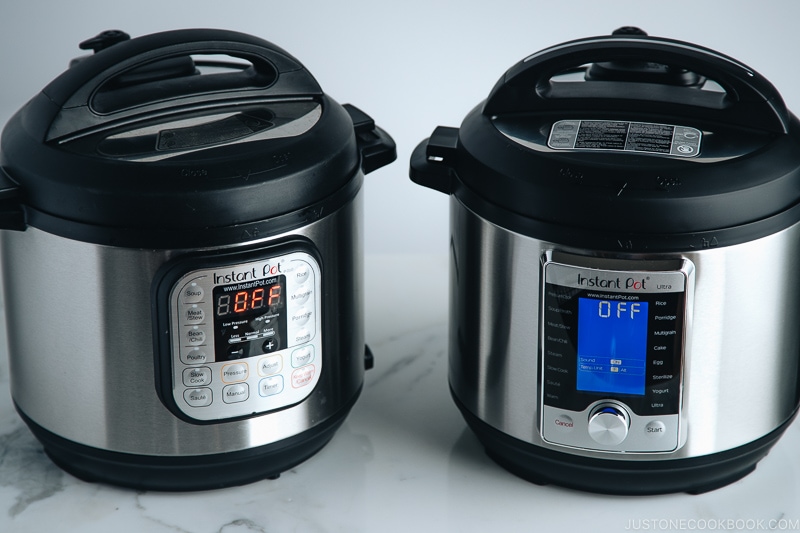
What pressure cooker do I use? I’ve been using this 7-in-1 Instant Pot Multi-Functional Cooker and I shared how much I love this gadget in this post, this post, and this post. It’s a pressure cooker, slow cooker, rice maker/porridge maker, steamer, sauté/browning, yogurt maker, and warmer in one machine. I mostly use the pressure cooker functions and unlike old-fashion pressure cookers, there is no hissing sound and it’s not scary at all to use and operate!
Besides cooking beans, it is a total lifesaver when you want to cook meat in less than 30 minutes. Even though it’s a short time, the tender meat falls off the bones! I usually switch on before heading to kids’ activities and when we come home, the dinner is ready! I don’t even have to be in the kitchen!
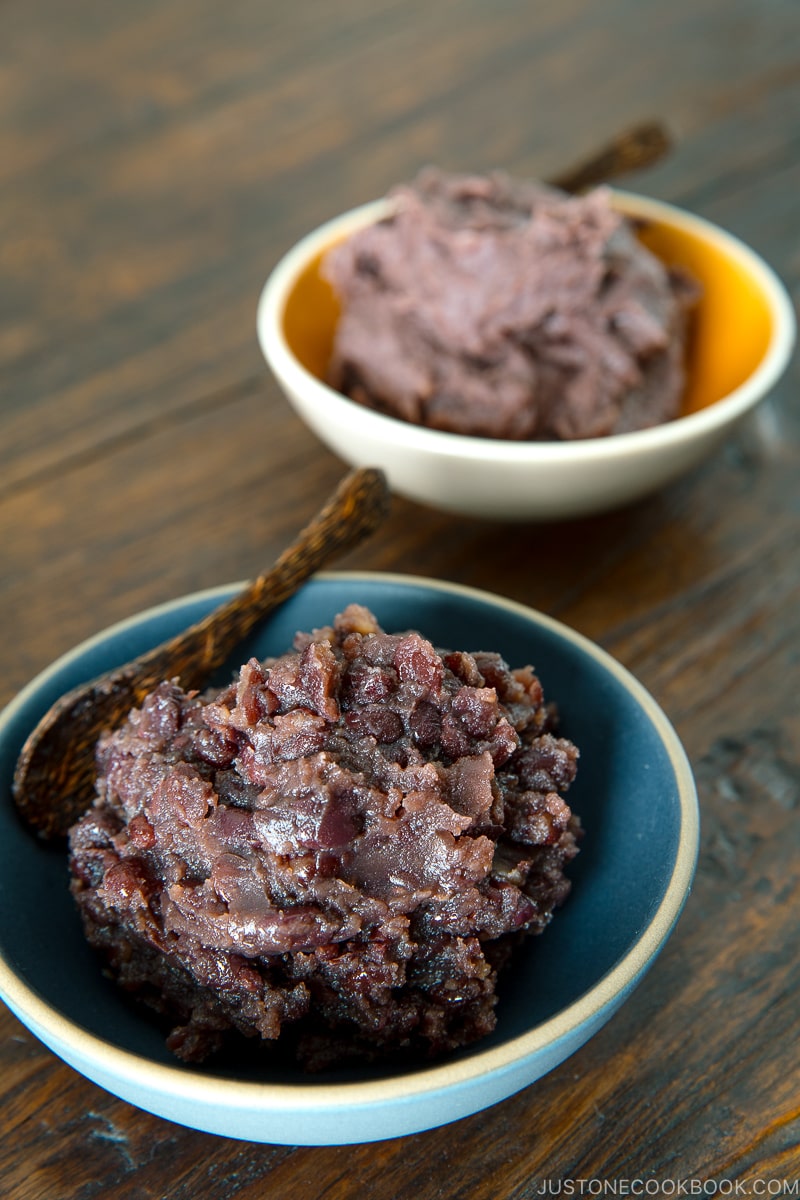
3 Simple Ingredients to Make Anko
What do you need for this recipe? It’s very simple, all you need is azuki beans, sugar, and salt. You can find azuki beans in Japanese grocery stores, Asian grocery stores, health food stores, or Amazon.
The amount of sugar that goes into this recipe is a lot (but it’s usually for the filling, and the rest of the sweet is not sweet – like mochi). But I’d say it is less sweet than the store-bought Anko. Although it’s not too sweet, I would not consider it as a healthy food because of how much sugar it contains. So please adjust the amount of sugar to your liking, based on the type of sweets you’re making.
Why do we put salt? Instead of adding more sugar, a pinch of salt can actually enhance the sweetness even more without making it salty.
Chunky or Fine Red Bean Paste
If you’re familiar with Japanese sweets, red bean paste generally comes in two types of texture: chunky and fine. The chunky red bean paste is called Tsubuan (粒あん) and the red bean paste with a fine smooth texture is Koshian (こしあん).

Koshian is used more often as filling but it’s really up to your preference. Traditionally, to make the smooth silky fine texture, a cooked and sweetened azuki bean mixture is pressed into a fine-mesh sieve to separate the bean skins.
To save time, I use a food processor or blender to skip the tedious process (my mom may not agree with me…). It might not be as silky and smooth, but I think it’s pretty good for the amount of time I spend in the kitchen making Koshian.
Making Anko in a pressure cooker is super easy and simple and cuts down on cooking time. The best part though is that homemade Anko tastes SO GOOOOOD!
How to Make White Bean Paste (Shiroan)
White Bean Paste or Shiroan is commonly used as a filling for wagashi (Japanese confectionery) such as mochi and manju.
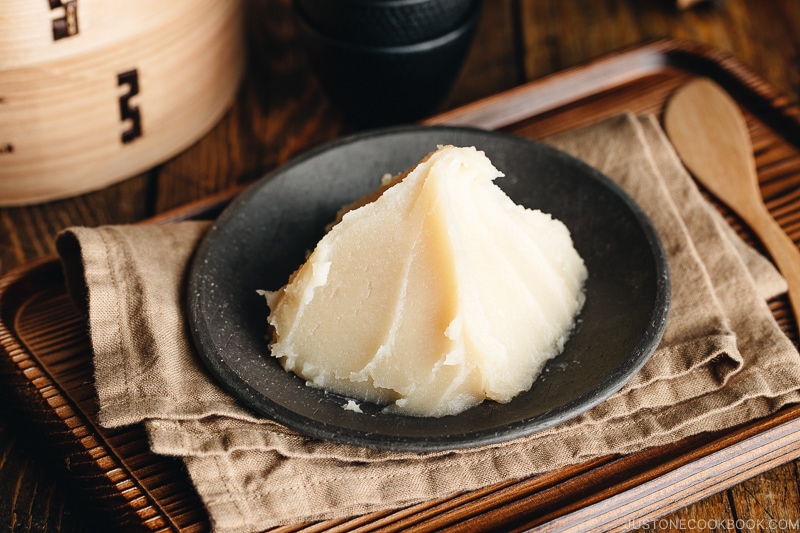
The paste has a milder bean taste, so it makes a great alternative to red bean paste!
Wish to learn more about Japanese cooking? Sign up for our free newsletter to receive cooking tips & recipe updates! And stay in touch with me on Facebook, Pinterest, YouTube, and Instagram.
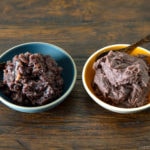
Pressure Cooker Anko (Red Bean Paste)
Ingredients
For 1 300-g Bag of Azuki Beans
- 1½ cups azuki beans
- 5 cups water (the ratio of azuki beans to water is 1 to 4; click the Metric button above for measurements by weight)
- 1¼ cups sugar (for koshian (fine paste), use 1¼ cups (240 g) or 80% of the azuki‘s weight; for tsubuan (chunky paste), use 1½ cups (300 g) or equal the azuki‘s weight)
- ⅛ tsp Diamond Crystal kosher salt
For 1 250-g Bag of Azuki Beans
- 1¼ cups azuki beans
- 4 cups water (the ratio of azuki beans to water is 1 to 4; see metric measurement)
- 1 cup sugar (for koshian (fine paste), use 1 cup (200 g) or 80% of the azuki‘s weight; for tsubuan (chunky paste), use 1¼ cups (250 g) or equal the azuki‘s weight)
- ⅛ tsp Diamond Crystal kosher salt
Instructions
- Gather all the ingredients.
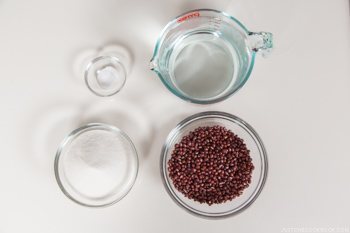
- Put 1½ cups azuki beans in a strainer and place it inside a large bowl. (If using 1 250-g bag, use 1¼ cups azuki beans.) Rinse the azuki beans in running water until the water is clear. Discard any pieces that are floating. Drain the water.
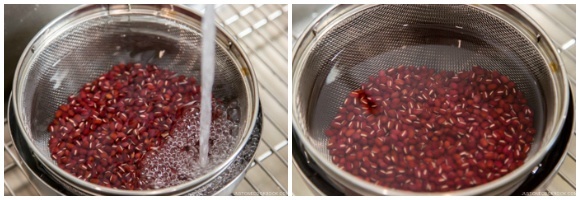
- Transfer the beans to your stovetop pressure cooker or the inner pot of an Instant Pot. Next, add 5 cups water to the pot. (For 1 250-g, add 4 cups water.)
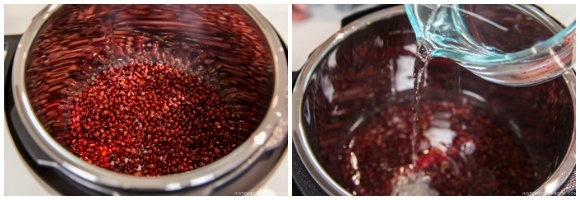
- Cover and lock the lid of your pressure cooker. If you’re using an Instant Pot, turn it on and press the Bean/Chili button. Press the “minus“ button to decrease the cooking time to 25 minutes from the default 35-minute cooking time.

- Before you walk away, make sure the steam release handle points at Sealing and not Venting.
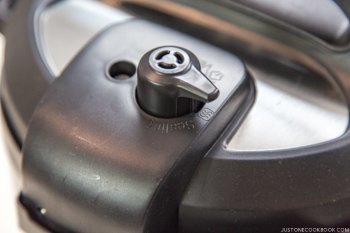
- If you’re using a stovetop pressure cooker, cook on high heat until you reach high pressure. Then, reduce the heat to low to maintain the pressure for about 20 minutes.
- When it’s done cooking, the Instant Pot will switch automatically to the Keep Warm mode. Let the pressure slowly release by itself for 15–20 minutes. If you are using a stovetop pressure cooker, remove the pot from the heat, and let the pressure release naturally. Before opening the lid, turn the steam release handle to Vent and release any remaining pressure.
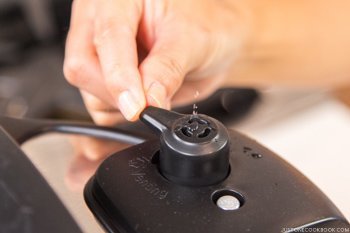
- Skim the foam off the surface and discard (if you prefer a more refined taste). Pick up one bean and mash it with your fingers. If it mashes easily, it‘s done. If the beans are still not done, close the lid and cook again under high pressure for a few more minutes, adjusting the time based on how underdone the beans are. Tip: If your beans were not done after the initial cook time, it could mean that your beans are a bit old. Next time, try using fresher beans for more consistent results.
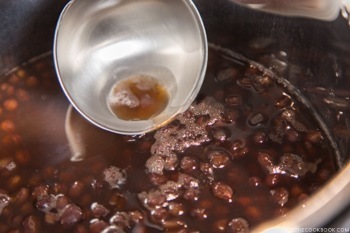
- If you‘re making Zenzai or Oshiruko (Red Bean Soup), DO NOT DRAIN and continue to the next step with the cooking liquid remaining in the pot. To make Anko, drain the azuki beans through a fine-mesh sieve and put the azuki beans back in the inner pot.
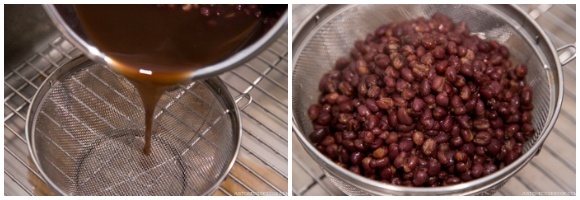
- Next, add 1¼ cups sugar to the pot. (For 1 250-g bag, add 1 cup sugar.) Press the Sauté button and select the Low option.
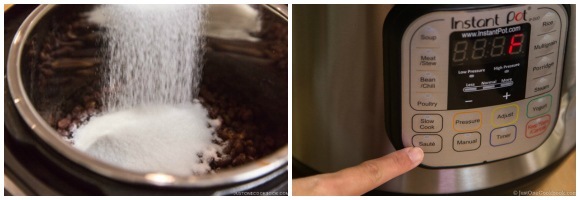
- Let the sugar dissolved completely, stirring occasionally with a wooden spoon. Then, add ⅛ tsp Diamond Crystal kosher salt (For 1 250-g bag, add ⅛ tsp Diamond Crystal kosher salt.) From here, you can make one of three variations: Anko with a fine texture, Anko with a course texture, or sweet red bean soup.
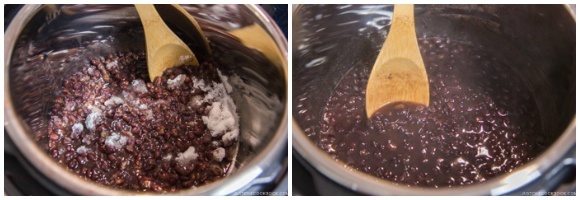
Option 1: Koshian (Fine Red Bean Paste)
- Continue cooking as you let the moisture evaporate. When you can draw a line through the azuki bean mixture and see the bottom of the pot for 1 second, turn off the heat. Take out the inner bowl from the Instant Pot and let the mixture cool for 5–10 minutes*. The mixture will thicken more as it cools down. *Important: If you purée hot liquid in the food processor or blender, the liquid may start coming out the edges of the food processor or the built-up steam can actually blow the lid off the blender. To prevent this from happening, it’s best to let the liquid cool for a few minutes.
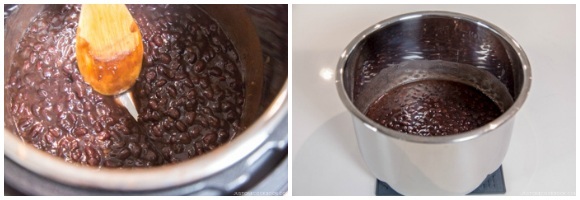
- After 5–10 minutes of cooling, transfer the azuki beans into a food processor or blender. Fill it only halfway and work in 2–3 smaller batches, if necessary. I use a 14-cup food processor so the mixture will all fit at once. Tip: If you prefer the traditional method, use a very fine-mesh strainer and press the mixture with a wooden spoon. The azuki bean skins will be separated and you will get a more refined koshian.
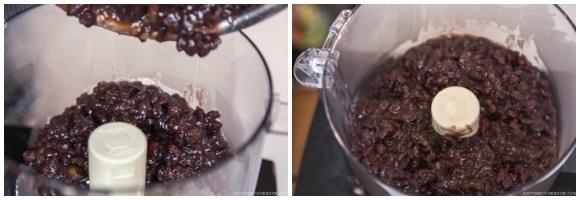
- Run the food processor or blender until the mixture becomes a smooth texture. If it looks too soft, don’t worry. It will dehydrate and thicken even more when the paste is completely cool. Tip: If you‘re using a blender, remove the center cap from the lid and hold a kitchen towel over it while blending.
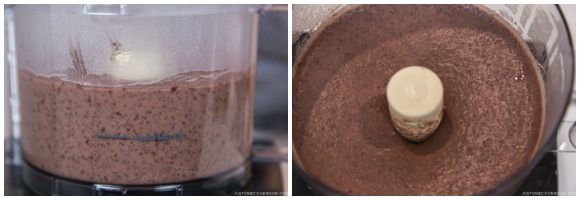
- Transfer to an airtight container. When it has cooled and thickened more, the koshian is now ready to use in a variety of Japanese sweets such as Strawberry Mochi (Ichigo Daifuku), Sakura Mochi, Manju, and Mizu Yokan. To store, cover and store in the refrigerator for up to 4 days and in the freezer for up to a month. I recommend dividing and wrapping 100 g portions in plastic film and storing it in a freezer bag. When you’re ready to use, defrost it in the refrigerator overnight. Tip: Compared to store-bought red bean paste, homemade anko uses less sugar and therefore doesn‘t keep as long.
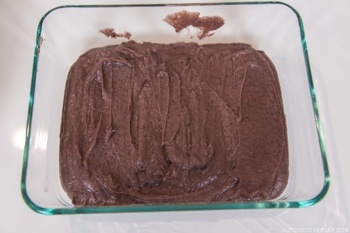
Option 2: Tsubuan (Chunky Red Bean Paste)
- Continue cooking as you let the moisture evaporate. When you can draw a line in the azuki bean mixture with the wooden spatula and see the bottom of the pot for 2 seconds, turn off the heat. Transfer the mixture to a baking sheet (or flat-rimmed plate) to let it cool.
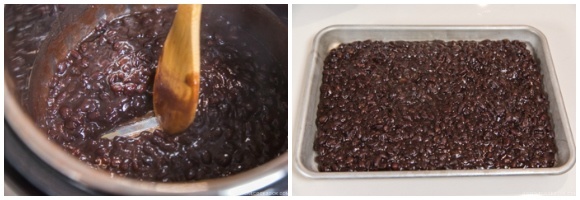
- When it has cooled and thickened, the tsubuan is now ready to use in a variety of Japanese sweets such as Daifuku Mochi, Anpan, Red Bean Pancakes, and Matcha Zenzai (Red Bean Soup). To store, transfer to an airtight container and store in the refrigerator for up to 4 days and in the freezer for up to a month. I also recommend dividing and wrapping 100 g portions in plastic film and storing it in a freezer bag. When you’re ready to use, defrost it in the refrigerator overnight.
Option 3: Zenzai or Oshiruko (Red Bean Soup)
- Keep the cooked azuki beans and their cooking liquid warm over low heat. If you like the soup without chunky beans, you can mash them with a potato masher or a hand blender. Mash most of the beans but keep some whole for texture. I like my red bean soup with chunky beans so I don‘t mash them. Serve hot in individual bowls and top each with a piece of toasted mochi. For instructions on how to prepare the mochi, see my Zenzai blog post and recipe. To store, transfer to an airtight container and store in the refrigerator for up to 4 days and in the freezer for up to a month.
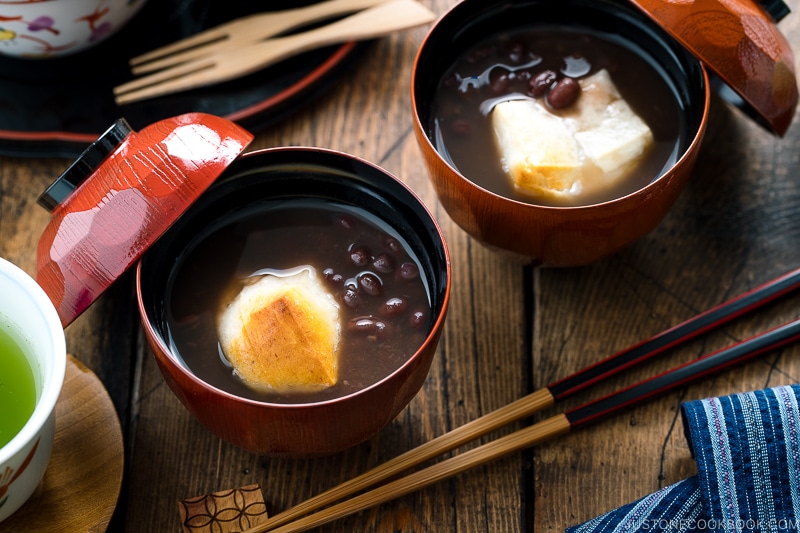
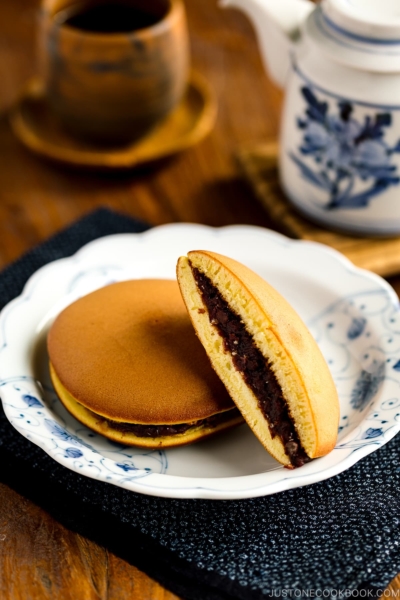
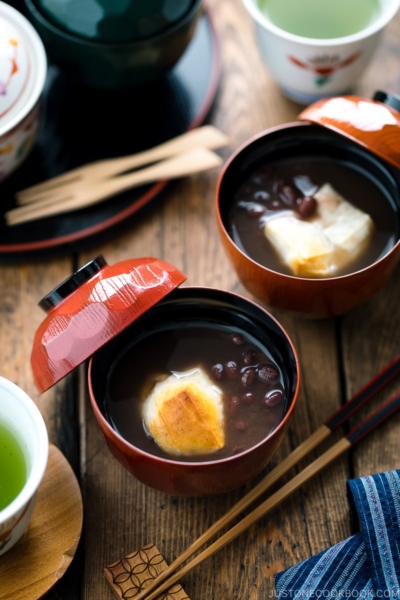
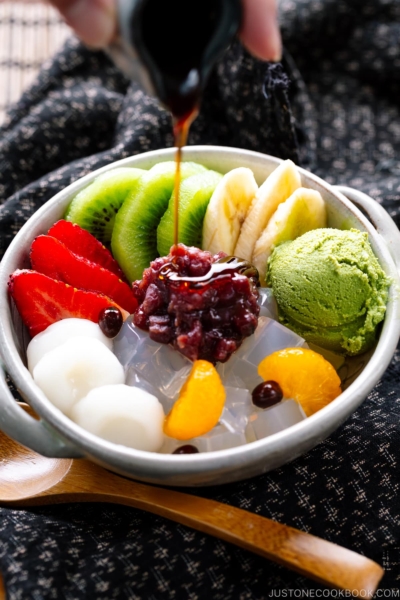





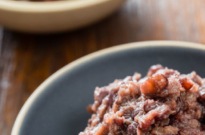
Wonderful, east and fast!! This tastes
Much better than store bought bean paste.
Hi, Mary! Thank you very much for trying Nami’s recipe!
We’re glad to hear you enjoyed homemade as much as we do! Thank you for your kind feedback!
Thank you for adding the ratios of sugar and water to beans. The bag I got was 494 g. I was glad to not have left over beans. The Anko paste tastes great and has family approval. We are trying your recipe for mochi on New years day and will make some with the Anko paste.
Hello, Jennifer. Aww. Your Anko looks amazing!
Thank you for trying Nami’s recipes and sharing your feedback with us. We hope you enjoy making and tasting homemade Mochi on New Year’s Day!